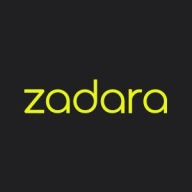


Find out what your peers are saying about NetApp, Google, Dropbox and others in Cloud Storage.
If AWS improves support and cost management, there would be fewer reasons for users to consider other cloud platforms.
As it is Amazon S3 Glacier, it is used only for archival purposes, so it is comparatively okay to use it, and we can save money compared to the standard which is high.
The cost is not cheaper compared to AWS, and we have not seen the expected return on investment.
While the time to respond was good, the time to resolve was not optimal, as it took more than a week.
Amazon's support model is consistent across services.
Training and support depend on the plan you have, with centralized support being very helpful in case issues arise.
There is room for improvement in providing more skilled and comprehensive solutions.
They provide documentation and resolve issues.
If it is a business plan, then the support we have is really good.
We lack adequate response times and a 24/7 service level agreement.
I rate the technical support from Zadara as nine out of ten.
Its auto-scaling feature is a crucial point, providing high scalability that I would rate at ten out of ten.
Elastic File Systems allow me to scale up or down easily.
It is very cost-effective, and there's no need for initial charges.
Amazon S3 Glacier auto-scales according to the data.
Amazon S3 Glacier is infinitely scalable, with no issues on our end.
Glacier has excellent scalability, with elasticity and security that meet industry standards.
Zadara is a fully-fledged platform, and our customers are happy with its use.
Amazon EFS is extremely stable, as it is managed by AWS.
While I experienced an EFS mount dropping, it was related to server issues rather than EFS itself.
It is specifically designed for cold storage.
I do not experience any stability issues.
Amazon S3 Glacier is quite stable, nine out of ten.
Enabling AI-driven or automatic features would be beneficial for new or nontechnical users.
In my project, there are challenges related to AWS, such as ensuring proper security measures with IMS code and encryption.
I would like to see improvements in the transfer rate as it takes quite a long time to retrieve data from Glacier compared to standard S3 storage.
Support could be more robust, with a focus on providing comprehensive solutions even for novel issues.
Another improvement is making Glacier available in all regions.
Adding AI capabilities could enhance the offering as well.
Maintenance can also be complicated, especially when deeper troubleshooting requires navigating the CLI and searching for logs.
EFS could cost around $30 to $50 per month for similar usage.
Amazon EFS is more costly compared to other storage options available from AWS.
Elastic File Systems can be expensive due to the nature of data transfer costs.
Compared to competitors like GCP, AWS can work on reducing hidden costs and overall pricing to retain startups and medium-sized businesses.
The storage cost is minimal, which is beneficial for archival purposes.
Amazon S3 Glacier is beneficial due to its lower cost.
The pricing is considered expensive.
Its ease of integration with other AWS services enhances our infrastructure, while the shared storage access improves reliability and processing continuity for our applications.
They help me process data while maintaining low latency, which is crucial for efficient data processing.
The most valuable feature of Amazon EFS is its auto-scaling capability.
Glacier greatly helps in managing storage costs by moving historical data to a lower-cost storage option.
The security features include object lock encryption and immutability options, so we can use this for backups.
The most valuable features of Amazon S3 Glacier are its cost-effectiveness for data archiving and its durability.
The most valuable feature is its storage management capability.
Zadara's troubleshooting feature is very valuable for me.
| Product | Market Share (%) |
|---|---|
| Amazon EFS (Elastic File System) | 5.0% |
| NetApp Cloud Volumes ONTAP | 10.2% |
| Nasuni | 8.5% |
| Other | 76.3% |
| Product | Market Share (%) |
|---|---|
| Amazon S3 Glacier | 13.8% |
| Amazon S3 | 14.1% |
| Microsoft Azure File Storage | 9.6% |
| Other | 62.5% |
| Product | Market Share (%) |
|---|---|
| Zadara | 0.3% |
| Dell PowerStore | 15.8% |
| HPE Alletra Storage | 10.0% |
| Other | 73.9% |



| Company Size | Count |
|---|---|
| Small Business | 6 |
| Midsize Enterprise | 4 |
| Large Enterprise | 7 |
| Company Size | Count |
|---|---|
| Small Business | 25 |
| Midsize Enterprise | 6 |
| Large Enterprise | 14 |
| Company Size | Count |
|---|---|
| Small Business | 12 |
| Large Enterprise | 3 |
Amazon Elastic File System (Amazon EFS) provides simple, scalable file storage for use with Amazon EC2 instances in the AWS Cloud. Amazon EFS is easy to use and offers a simple interface that allows you to create and configure file systems quickly and easily. With Amazon EFS, storage capacity is elastic, growing and shrinking automatically as you add and remove files, so your applications have the storage they need, when they need it.
When mounted to Amazon EC2 instances, an Amazon EFS file system provides a standard file system interface and file system access semantics, allowing you to seamlessly integrate Amazon EFS with your existing applications and tools. Multiple Amazon EC2 instances can access an Amazon EFS file system at the same time, allowing Amazon EFS to provide a common data source for workloads and applications running on more than one Amazon EC2 instance.
It’s designed for high availability and durability, and provides performance for a broad spectrum of workloads and applications, including Big Data and analytics, media processing workflows, content management, web serving, and home directories.
Amazon Glacier is a secure, durable, and extremely low-cost cloud storage service for data archiving and long-term backup. Customers can reliably store large or small amounts of data for as little as $0.007 per gigabyte per month, a significant savings compared to on-premises solutions. To keep costs low, Amazon Glacier is optimized for infrequently accessed data where a retrieval time of several hours is suitable.
Zadara is a powerful enterprise-level storage solution whose design enables it to handle every aspect of a user’s data storage needs. It can be deployed in any location, using any protocol, and storing any data type that an organization requires. With Zadara, organizations can do everything that they were able to do with more traditional systems in a cheaper and more efficient way.
Zadara Benefits
Some of the ways that organizations can benefit by choosing to deploy Zadara include:
Zadara Features
File analytics. Organizations can leverage a powerful analytics package that can provide them with critical insights. These tools can help users sort through their data and make more informed data management decisions.
Reviews from Real Users
Zadara is a highly effective solution that stands out when compared to many of its competitors. Two major advantages it offers are its extensive suite of cloud solution integrations and its object storage capability.
Steve H., the chief technology officer at Pratum, writes, “One of the most valuable features is its integration with other cloud solutions. We have a presence within Amazon EC2 and we leverage computer instances there. Being able to integrate with computing, both locally within Zadara, as well as with other cloud vendors such as Amazon, is very helpful, while also being able to maintain extremely low latency between those connections.”
Mauro R., the CEO of Momit SRL, says, “The object storage feature is wonderful. With traditional storage, you have a cost per gigabyte that is extremely high or related to the number of disks. With Zadara Storage Cloud, you have a cost per gigabyte that you can cut and tailor to your needs independent of the number or size of the disks.”